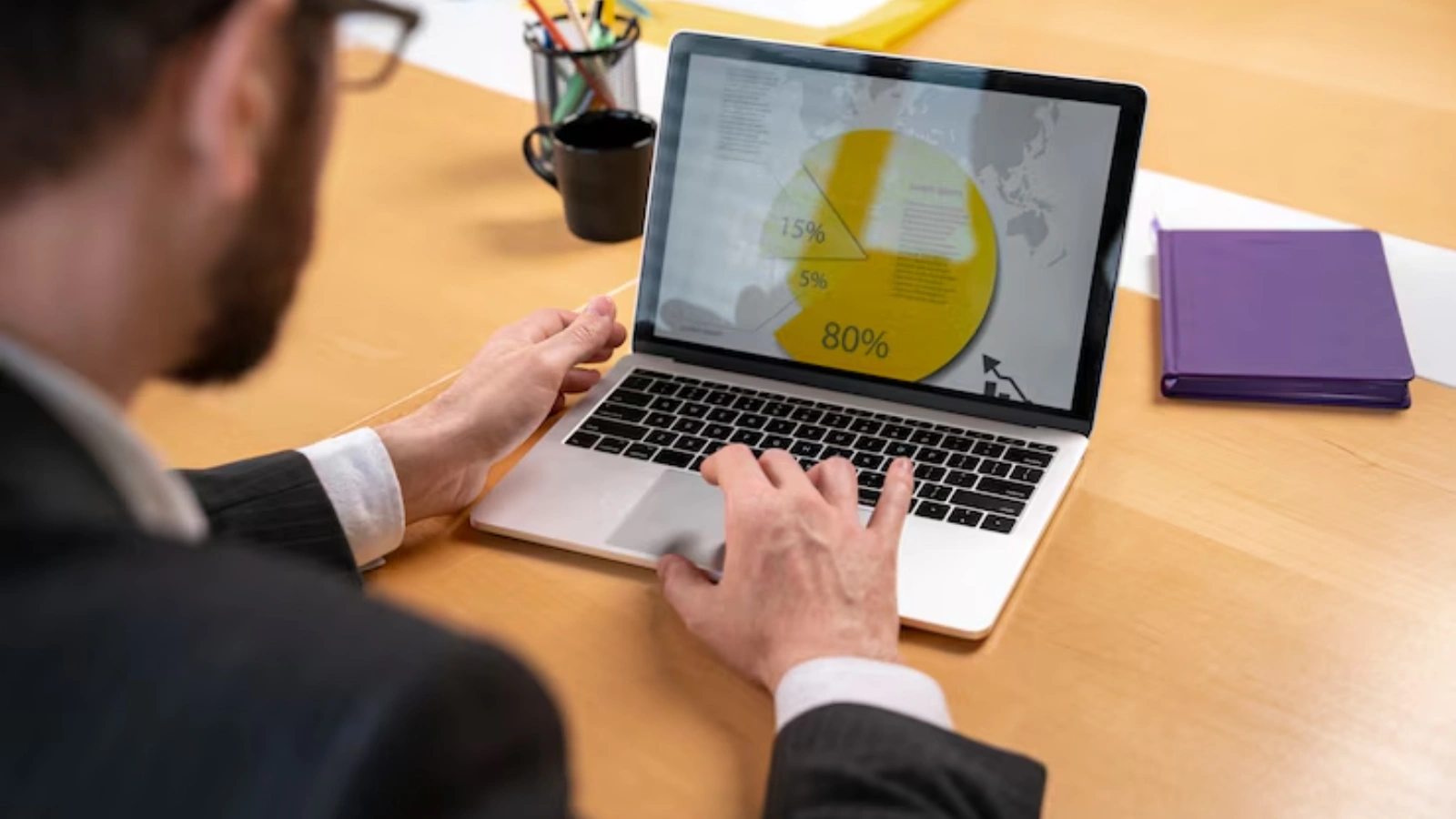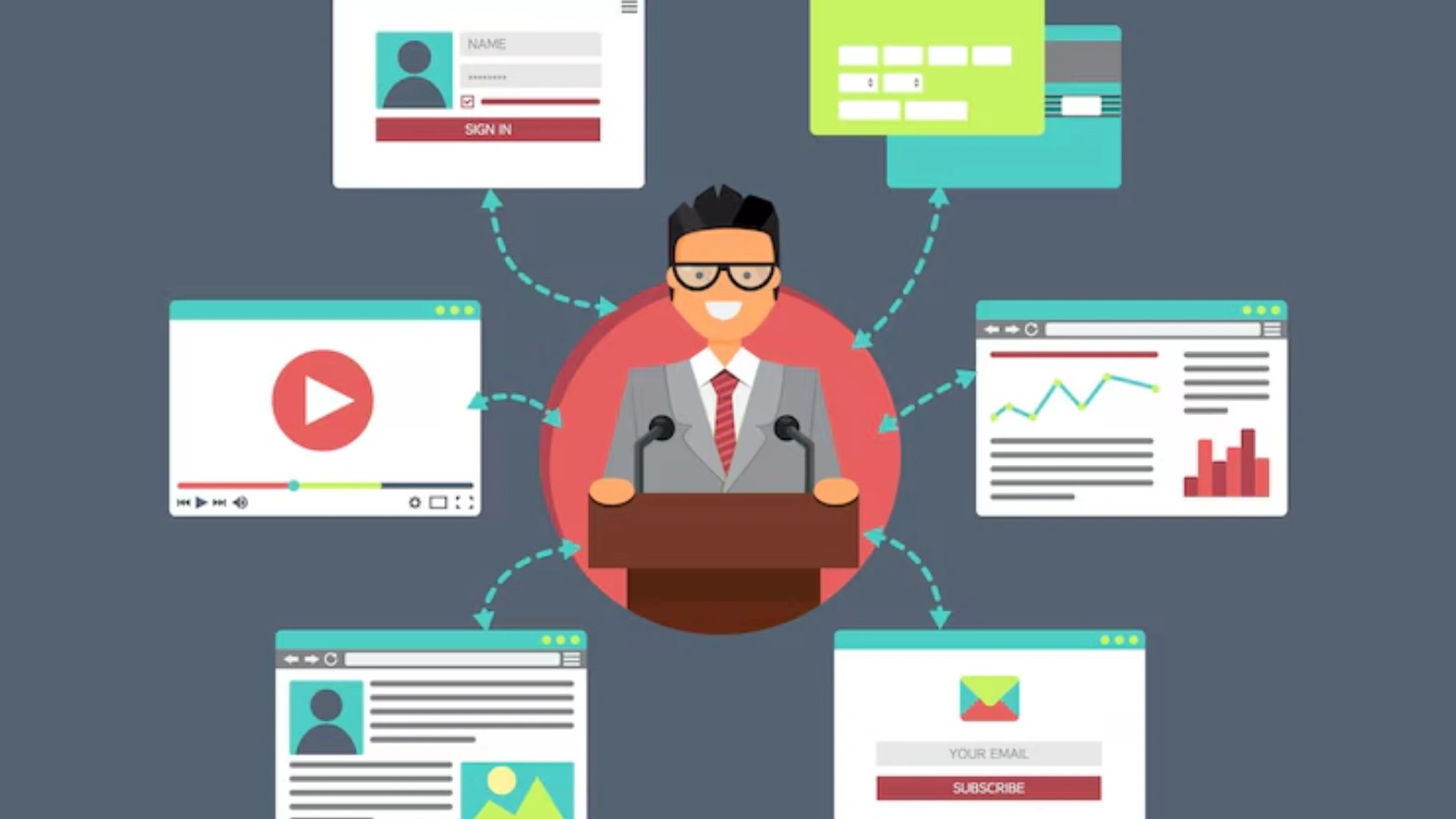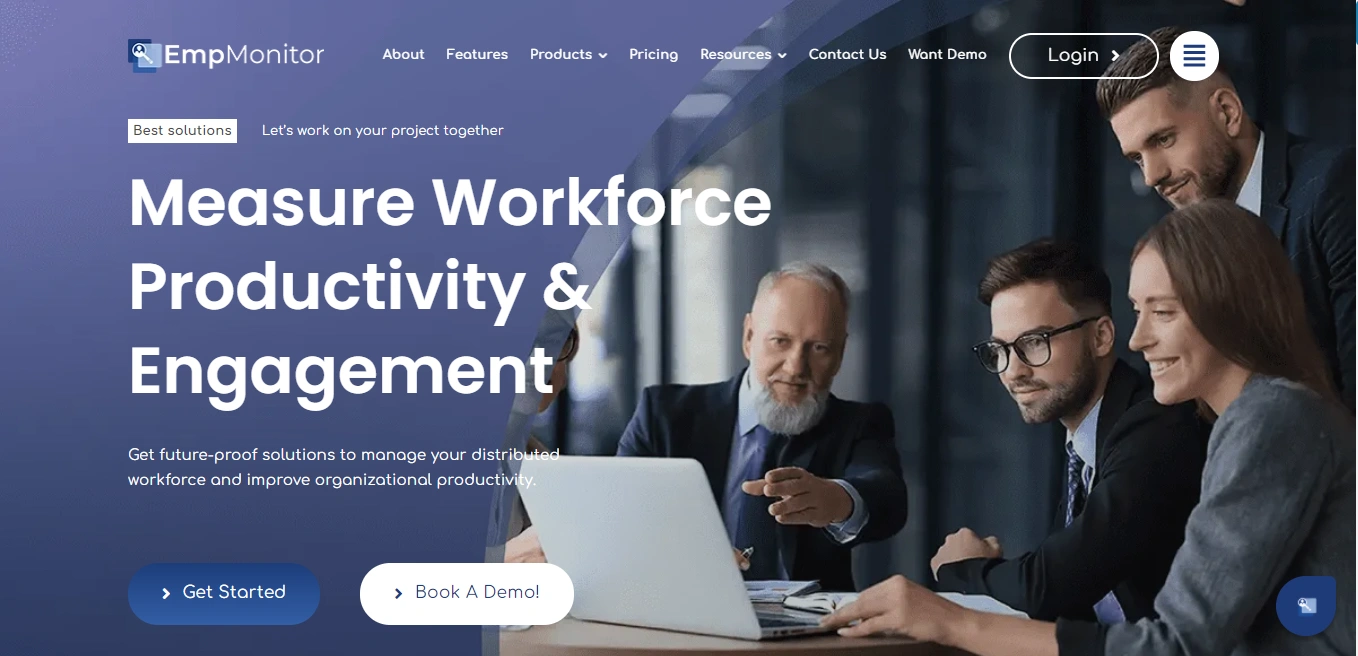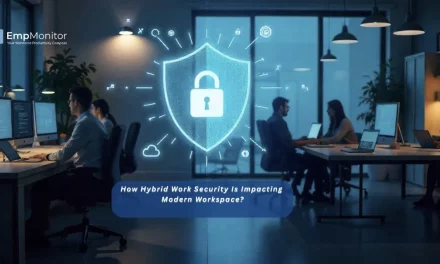With everything moving so quickly in today’s digital world, keeping a close eye on your operations has never been more important. Businesses need to stay updated on what’s happening across their teams, systems, and data the moment it happens. That’s why more and more companies are turning to live monitoring; it gives them the ability to stay informed and in control, every second of the day.
In this blog, you’ll gain a clear understanding of what active monitoring is, why it matters, and how it works in everyday business settings.
You’ll also explore the tools that power it, the difference between live and real-time monitoring, and how to make it a valuable part of your workflow to improve performance, security, and decision-making.
Listen To The Podcast Now!
What Is Live Monitoring?
It refers to the continuous, real-time tracking and observation of systems, user activity, or infrastructure. Unlike traditional methods that rely on reviewing logs after an event has occurred, live monitoring provides immediate visibility into what’s happening as it unfolds. This enables faster decision-making, quicker response times, and better overall control.
In addition to real-time visibility, live monitoring empowers organizations to:
- Identify anomalies before they escalate: Unusual behavior or system irregularities can be detected early, allowing proactive intervention.
- Strengthen compliance and security: Many regulations require active oversight of sensitive data. Live monitoring supports audit trails and ensures policy adherence.
- Improve operational efficiency: By observing workflows as they happen, businesses can identify bottlenecks, redundancies, or inefficiencies that might otherwise go unnoticed.
- Support data-driven decisions: Continuous monitoring generates valuable data streams that can be analyzed to uncover trends, forecast issues, or optimize resources.
- Enhance accountability: Real-time tracking promotes transparency and accountability, especially in remote or hybrid work environments.
Overall, live monitoring is not just about surveillance; it’s about enhancing responsiveness, insight, and control in fast-paced, data-driven environments.
What Is The Importance Of Live Monitoring
The ability to see what’s happening across systems, applications, or teams in real time offers several strategic advantages:
Real-Time Decision Making:
With live monitoring, organizations are equipped to respond to issues as they occur. From system slowdowns to policy breaches, real-time alerts provide the insight necessary to act instantly.
Enhanced Security and Compliance:
Security threats don’t wait, and neither should your response. Live monitoring helps in detecting unauthorized access, data leaks, and compliance violations as they happen. This is critical for meeting regulatory requirements and avoiding penalties.
Productivity and Efficiency:
When managing remote or hybrid teams, real time monitoring tools help managers understand how time is spent and which apps are being used. It ensures better task alignment and project execution.
Customer Satisfaction:
In customer-facing industries, live monitoring supports service uptime and faster issue resolution, leading to improved user experience.
Proactive Troubleshooting:
Rather than waiting for systems to fail, businesses can intervene early with proactive alerts, saving time and money.
How Live Monitoring Works: A Step-by-Step Process
To truly grasp the power of this technology, it’s important to understand how it operates behind the scenes. Here’s a comprehensive overview of each stage involved in the process:
Capture:
The first step begins with data collection. Monitoring software or agents are installed across devices, applications, servers, or networks to continuously capture live data. This could include screen activity, system logs, CPU usage, user behavior, network traffic, and more. The goal is to ensure that no relevant activity goes unnoticed.
Transmission:
Once the data is captured, it needs to be securely transmitted to a centralized location, typically a server or a cloud-based platform. Encryption protocols and secure data channels are often used to ensure that the information remains protected during transfer, especially in industries where confidentiality is critical.
Processing:
After reaching the central monitoring system, the raw data is processed. Algorithms analyze the information in real time to identify trends, usage patterns, or any deviations that may indicate a potential problem. This automated analysis reduces the burden on human operators while increasing accuracy and response speed.
Alerting:
If the system detects anything unusual, such as a system error, unauthorized login, or network overload, it immediately triggers an alert. These alerts can be sent via email, SMS, pop-up notifications, or through the monitoring dashboard.
This proactive step ensures that the relevant personnel can act before minor issues become major disruptions.
Visualization:
Real-time insights are presented through visual dashboards. These dashboards use charts, graphs, logs, and even live screen feeds to help users quickly interpret data.
Customizable views allow teams to monitor only the metrics that matter most to their role or department, making oversight efficient and focused.
Logging:
Even though real monitoring is about real-time awareness, storing historical data is equally important. Every monitored activity is logged and archived. This data can later be used for audits, performance reviews, troubleshooting, or compliance reporting.
It ensures that you not only see what’s happening now but also learn from what has happened in the past.
Each step in this process works together to ensure that businesses stay continuously informed, enabling them to act swiftly and make smarter, data-driven decisions.
Also Read:
Key Features Of Effective Live Monitoring Tools
Not all tools are created equal. To ensure your solution delivers real value, it should include these features:
Real-Time Dashboards:
An intuitive dashboard displays system status, user activity, and workflow data through dynamic charts and key performance indicators. This real-time visualization helps teams stay informed and respond quickly to any changes.
Custom Alerts and Notifications:
The ability to set custom thresholds ensures you’re immediately alerted when something unusual happens. Whether it’s via email, SMS, or app notifications, these alerts allow for instant action.
AI and Machine Learning:
Modern tools leverage artificial intelligence to analyze behavior and detect patterns. These capabilities help predict and prevent potential threats before they escalate into real problems.
Screen Monitoring:
This feature enables managers to view employee screens in real time, offering better insight into productivity and compliance. It is especially useful for overseeing remote or hybrid teams.
Data Encryption:
Security is critical, and strong encryption protects all data transmitted between devices and servers. Look for solutions offering end-to-end encryption to ensure sensitive information remains private.
Scalability and Integration:
As your organization expands, your monitoring solution should grow with it. Scalable tools allow you to add users or systems easily, while integration ensures smooth compatibility with your existing tech stack.
Comprehensive Reporting:
Detailed reports, both scheduled and on-demand, offer insights into trends, performance metrics, and past issues. These reports are essential for audits, strategy refinement, and long-term planning.
One tool that brings all these features together in a single, powerful platform is EmpMonitor. Let’s take a closer look at how it delivers on every front.
Why EmpMonitor Is the Go-To Tool For Employee Live Monitoring?
When it comes to managing distributed teams or enhancing internal visibility, EmpMonitor stands out as a powerful all-in-one employee monitoring software. It goes far beyond basic tracking, offering a robust suite of features designed to increase productivity, tighten security, and streamline management operations.
Key Features Of EmpMonitor:
Live Screen Monitoring:
Instantly view employee screens without alerts, enabling managers to track workflows in real time and ensure accountability without disrupting productivity.
Time Tracking:
Capture active vs. idle work hours with precision. Generate accurate timesheets and gain insights into work patterns to optimize team performance.
User Activity Monitoring:
Monitor detailed app and website usage by the hour or day to assess productivity, focus levels, and tool adoption across your team.
Screen Recording:
Automatically record screen activity in short, time-stamped clips for later review. Ideal for compliance checks, quality assurance, and employee training.
Attendance & Leave Management:
Log employee check-in/check-out times, automate leave tracking, and generate reliable attendance reports, perfect for streamlined HR operations.
Real-Time Monitoring:
View employee activity as it happens, track logins, screen interactions, and behavior in real time to make informed decisions on the spot and maintain workflow integrity.
Workforce Management:
Streamline employee oversight with tools for task delegation, schedule management, productivity analysis, and team coordination, all from a centralized platform.
EmpMonitor empowers organizations with real-time insights, high-performance analytics, and administrative ease, all from a single dashboard. Whether you’re leading a remote workforce or ensuring compliance in a hybrid setup, EmpMonitor brings visibility, security, and control to the forefront.
Best Practices For Implementing Live Monitoring in Your Organization
Implementing live monitoring effectively requires a thoughtful approach to ensure it supports your business goals without disrupting workflows or trust.
Here are five best practices to help you get started on the right foot:
- Set Clear Goals: Define specific objectives such as improving productivity, enhancing security, or optimizing system performance to guide your monitoring strategy.
- Communicate Transparently: Inform your team about the purpose of monitoring, how the data will be used, and the benefits to foster trust and cooperation.
- Customize Alerts and Reports: Tailor notifications and reports to focus on critical metrics, preventing information overload and enabling quick, informed decisions.
- Protect Privacy and Ensure Compliance: Adhere to legal requirements, safeguard sensitive data with encryption, and respect employee privacy to maintain ethical standards.
- Review and Improve Regularly: Continuously evaluate monitoring results and gather feedback to refine your process and keep it aligned with evolving organizational needs.
Also Read:
The Future Is Now: Real-Time Monitoring And Its Implications
Where Live Monitoring Is Used: Key Applications Across Industries
Live monitoring is not limited to IT alone. It spans across multiple industries and operational areas:
IT Infrastructure Monitoring:
This involves tracking server uptime, bandwidth consumption, hardware performance, and system errors in real time. It’s a vital part of any comprehensive real time system monitoring strategy to ensure smooth IT operations.
Network and Security Monitoring:
This type of monitoring focuses on network traffic, firewall activity, and detecting suspicious or unauthorized access. It helps businesses respond quickly to cybersecurity threats and prevent data breaches.
Employee Monitoring:
With the help of employee screen monitoring tools like EmpMonitor, managers can oversee team productivity, track application usage, and ensure responsible work behavior, especially in remote or hybrid setups. EmpMonitor serves as a leading example of a robust computer monitoring software designed specifically for modern workforce management.
Video Surveillance:
Used primarily for physical security, this involves monitoring live camera feeds across offices, warehouses, or public areas. It enables instant detection of unauthorized movement or safety violations.
Healthcare Monitoring:
Hospitals and remote care facilities use real-time systems to track patient vitals such as heart rate and oxygen levels. This ensures timely intervention in critical situations, improving patient outcomes.
Industrial Monitoring:
Factories and plants utilize live tools to detect equipment malfunctions, temperature shifts, or safety violations. It plays a crucial role in preventing accidents and maintaining operational standards.
Live Monitoring vs Real-Time Monitoring
Live monitoring and real-time monitoring may sound similar, but they serve distinct purposes in today’s data-driven and security-conscious environments.
Live monitoring typically refers to real-time video surveillance, where a person actively views camera footage as it is being recorded. This method is most common in security setups such as retail stores, corporate offices, or public spaces. Its primary goal is immediate visual assessment and response, often used to detect intrusions, theft, or unusual behavior as it happens.
On the other hand, real-time monitoring deals with the collection, processing, and analysis of live data across systems and devices. This includes monitoring server uptime, employee productivity, environmental conditions, and application performance. Rather than being visual, it’s more statistical and analytical; automated alerts, dashboards, and reports are used to ensure operational efficiency, detect anomalies, and make timely decisions.
While both types operate in the “now,” live monitoring is more observational, while real-time monitoring is action- and data-driven. Choosing between them depends on your goals, whether it’s visual oversight or performance intelligence. In some cases, integrating both offers the most comprehensive coverage.
Conclusion
Live monitoring gives organizations real-time insight into their operations, enabling faster responses, improved security, and increased productivity. By continuously tracking systems and employee activities, businesses can identify issues early, streamline workflows, and maintain better control.
Whether managing IT infrastructure, securing networks, or overseeing remote teams, live monitoring helps prevent disruptions before they impact performance.
EmpMonitor is a comprehensive live monitoring solution offering live screen viewing, time tracking, detailed reports, and instant alerts, all in an easy-to-use platform. With a strong focus on data security and privacy, EmpMonitor boosts transparency, accountability, and efficiency across your workforce.
Integrating EmpMonitor provides a centralized tool for quick decision-making, operational integrity, and proactive risk management, helping your business stay secure and agile.
FAQs
1. What are the main challenges organizations face when implementing live monitoring?
Ans. Organizations often struggle with balancing comprehensive monitoring without overwhelming staff with excessive alerts, ensuring data security and privacy compliance, integrating monitoring tools with existing systems, and managing the costs and complexity of deployment and maintenance.
2. How does live monitoring impact employee privacy, and how can it be balanced?
Ans. Live monitoring can raise privacy concerns if employees feel overly surveilled. To balance this, organizations should communicate transparently about monitoring policies, limit data collection to work-related activities, implement strict access controls, and comply with relevant privacy laws and regulations.
3. What role does cloud computing play in modern live monitoring solutions?
Ans. Cloud computing enables scalable, flexible, and remote access to live monitoring data. It allows organizations to collect, store, and analyze large volumes of data in real time without heavy on-premises infrastructure, supporting collaboration and quicker decision-making.
4. How can live monitoring integrate with incident response workflows?
Ans. Live monitoring can trigger automated alerts and provide real-time data feeds that feed directly into incident response platforms. This integration helps teams quickly identify, assess, and remediate issues, reducing downtime and minimizing business impact.
5. What industries benefit most from combining live monitoring with AI analytics?
Ans. Industries like cybersecurity, healthcare, manufacturing, finance, and retail benefit significantly as AI-powered live monitoring can predict failures, detect anomalies, enhance threat detection, and optimize operational efficiency in these sectors.















